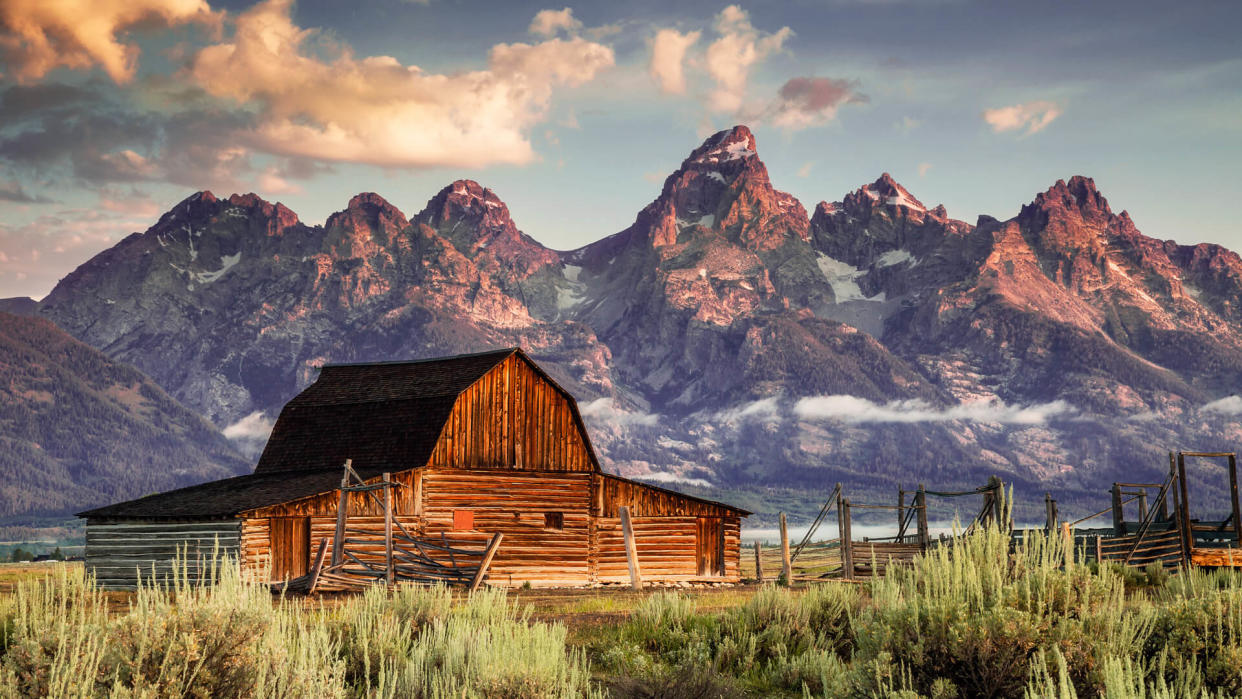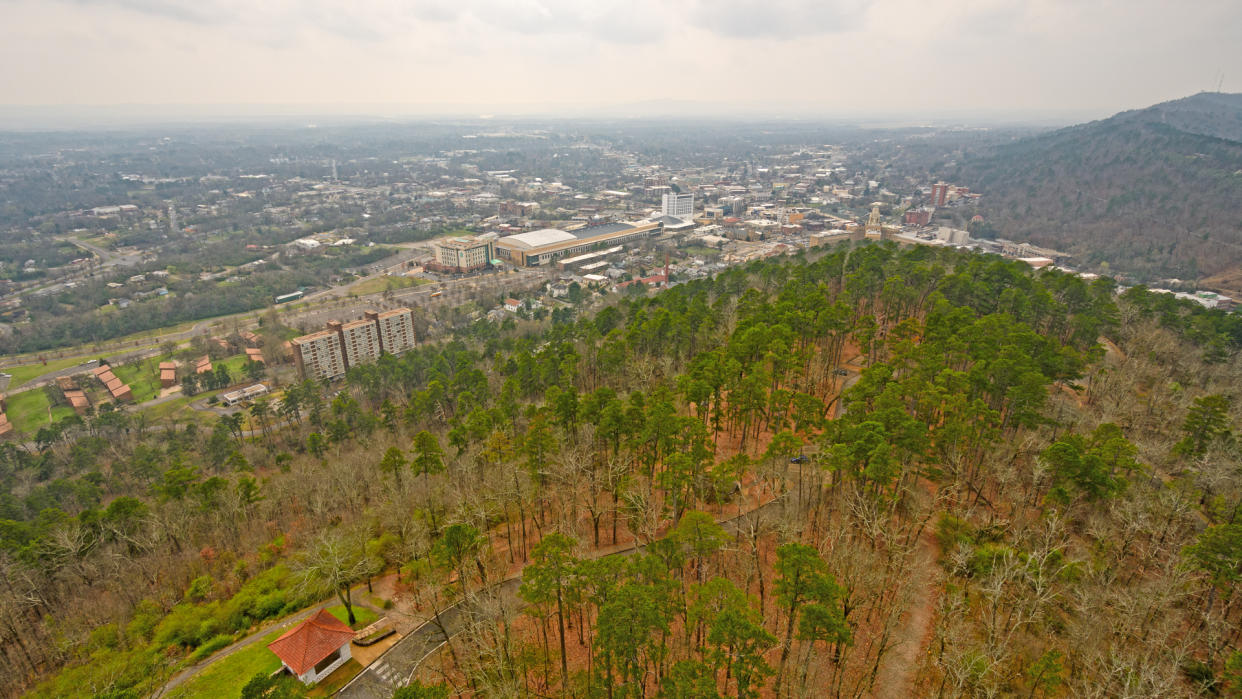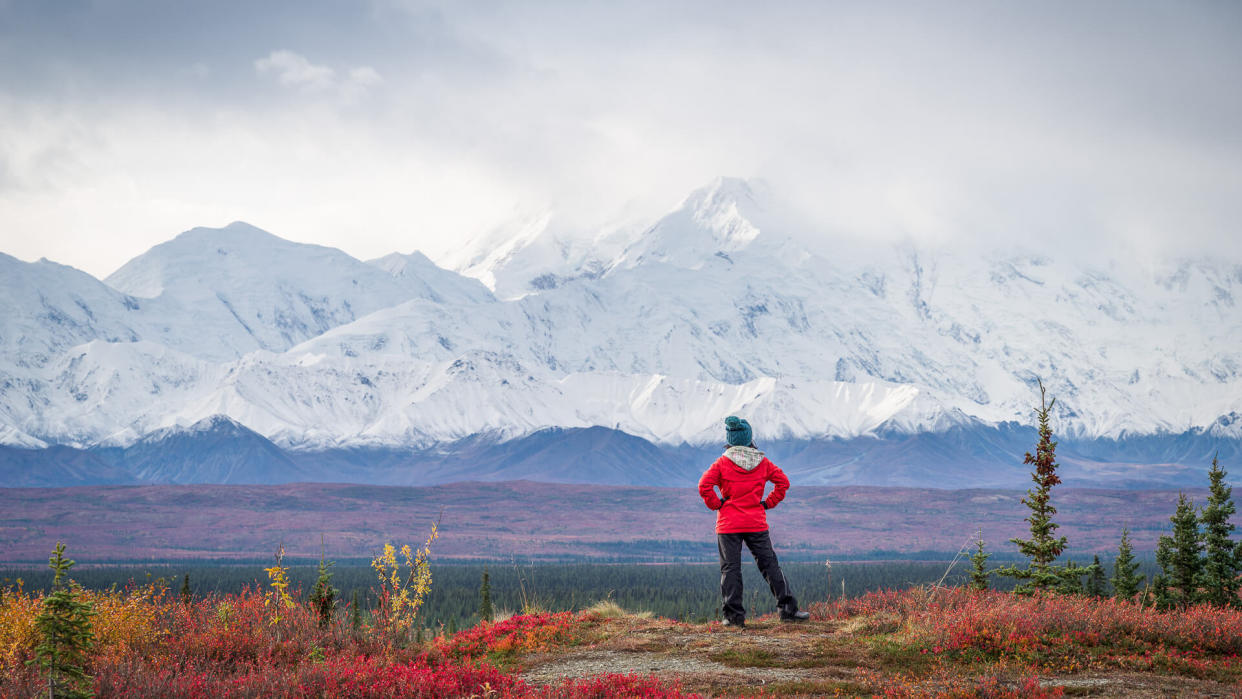Your Tax Dollars Are Paying For These National Parks, Go Visit!
If you’re one who likes to squeeze every drop of value out of each dollar, the realization that your tax money helps to fund the National Park Service might bother you if you don’t visit the facilities often. If that’s the case, relax. As long as you’re squeezing as much enjoyment out of the vast areas under the NPS’ jurisdiction — 419 park units, 23 national scenic and national historic trails, and 64 wild and scenic rivers — each year as you do out of a single latte, you’re doing fine. After all, that’s about what the park service’s “share” from every U.S. household comes to annually.
However, if getting your money’s worth is the only reason you have for visiting one of America’s national parks, you’re missing out. The National Park Service lands are treasures to be enjoyed. Envied the world over, the federal system preserves some of the most incredible natural features anywhere. There’s no better way to see America — and be awed at the same time — than by a visit to one of the locales from coast to coast. While some boast awesome hiking, backpacking and other recreational opportunities, you can take in much of the scenery via a drive without having to leave your car in the midst of a worldwide pandemic. Since the taxpayer share of the park system budget is so little, some sites require an entrance fee that covers everyone in your car, or a smaller per-person admission if you’re visiting on foot, bike or by some other method.
So which of the national parks should be on your list of must-see American landmarks? Here are some of the best places to take in this fall — or any time of the year, weather permitting. Remember that the pandemic might have altered some of the hours or open areas, so check the National Park Service website before you head out for a visit.
Last updated: Sept. 9, 2020
Yosemite
Entry fee:
Per vehicle: $35
Per person: Free with vehicle entry, $20 without
Odds are good that you’ve encountered numerous photos and computer screen backgrounds of Yosemite, but seeing the Northern California park in person gives you an entirely different view — and a gorgeous one at that.
Granite cliffs with glittering waterfalls highlight historic Yosemite, which Native Americans began to populate once the glaciers of the Ice Age receded. Environmentalist and writer John Muir, founder of the Sierra Club, lobbied the government to create Yosemite National Park and later convinced President Theodore Roosevelt to have control of the park transferred from the state to the federal government for greater protection of the land.
Isle Royale
Entry fee:
Per vehicle: N/A
Per person: $7
It takes a passenger ferry or a seaplane to reach Isle Royale since it is surrounded by Lake Superior, but it’s well worth the visit if you’re in Michigan. It’s a scenic locale where you might even have a shot at spotting one of the rare wolves that occupy the island, which is a network of trails taking you through the gorgeous, forested landscape and past the rocky cliffs. Your best chance of seeing the elusive wolf would be along lakeshores, open areas or hiking trails. And while a wolf spotting is rare, the moose are everywhere. (Be careful if you see a wolf, of course, but these wolves generally are afraid of people and will avoid you.)
Olympic
Entry fee:
Per vehicle: $30
Per person: Free with vehicle entry, $15 without
Few areas of the country have the natural beauty of the Pacific Northwest, and that’s where you’ll find Olympic National Park, located about 90 miles west of Seattle. If you’ve ever been confused by the phrase “purple mountain majesties,” this is the place where it will become clear. You also can see a variety of ecosystems supported by the area’s unique features — from mountain glaciers to 70 miles of stunning ocean coastline.
Zion
Entry fee:
Per vehicle: $35
Per person: Free with vehicle entry, $20 without
Tucked in the southwestern corner of Utah, Zion is closer to Las Vegas than to Salt Lake City and shares some characteristics of the Nevada desert city. Zion is packed with gorgeous red rock formations and a variety of desert flora and fauna. You can hike through picturesque canyons filled with wildflowers to your heart’s content here. Be prepared for the temperatures that can exceed 100 degrees in the summer months.
Be Aware: The Most Expensive Times to Visit All 50 States
Grand Teton
Entry fee:
Per vehicle: $35
Per person: Free with vehicle entry, $20 without
What’s that? You were expecting Yellowstone to be the featured Wyoming park? Well, Yellowstone, America’s best-known national park, is just north of the Grand Tetons — an easy trip if you can’t skip Old Faithful. Meanwhile, you can avoid a lot of the crowds by opting to stay in, or near, the Tetons and spending more time there. The beautiful peaks of the namesake mountains jut up above the popular destination of Jackson Hole and offer any number of ways to take in the gorgeous natural surroundings. And if you’re a real fiscal policy geek, you could coordinate your visit with the Federal Reserve Bank of Kansas City’s annual meeting in the nearby Wyoming town.
Rocky Mountain National Park
Entry fee:
Per vehicle: $25
Per person: Free with vehicle entry, $15 without
The peaks of Rocky Mountain National Park soar to more than 12,000 feet, allowing visitors to take in the incredible vistas in every direction. A leisurely drive up Trail Ridge Road lets you breathe in the majestic beauty of the Rocky Mountains, along with its wildflowers, wildlife and starry skies. As a side note, if you’re a fan of horror, the Stanley Hotel in nearby Estes Park, Colorado — a stay at which inspired Stephen King to write “The Shining” — is close enough to the park that you can make it your home base for the visit.
Acadia
Entry fee:
Per vehicle: $30
Per person: Free with vehicle entry, $15 without
The crown jewel of the Northeast, Acadia National Park encompasses mountains, the North Atlantic coastline, woodlands and more in a series of islands and islets in Maine. It is one of the top 10 national parks in the United States in terms of visits, with more than 3.5 million a year. Given its shoreline location, water activities are popular, but Acadia visitors have plenty to do — think climbing, birdwatching, horseback riding, hiking and bicycling. And with a bunch of kids’ activities, there’s something for every member of the family.
Everglades
Entry fee:
Per vehicle: $30
Per person: Free with vehicle entry, $15 without
As ecosystems go, swamps don’t get a lot of love. However, a trip to Everglades National Park just might show you that towering mountains and the most ostentatious displays of natural beauty are not the only parts of the landscape to appreciate. At Florida’s Everglades, which encompasses 1.5 million acres of wetlands, you can take in the rich, diverse ecosystem packed with all sorts of interesting plants and animals. Spend your day birdwatching, or take a kayak or a boat ride to try to spot a crocodile, manatee or dolphin.
Big Bend
Entry fee:
Per vehicle: $30
Per person: Free with vehicle entry, $15 without
In southwestern Texas, Big Bend National Park is a haven for people interested in learning about both the past and exploring the present of the area. At the Fossil Discovery Exhibit, visitors can see how the plants and animals occupying the land have changed over the past 130 million years, then walk along a short trail to take in some of the park’s geologic sites. Nestled along the Rio Grande, the park is open for rafting and other water excursions once visitors have had their fill of scenic drives, birdwatching, backpacking and more.
Helpful: Tips and Tricks To Save On These 6 Travel Necessities
Great Smoky Mountains
Entry fee: None
If you take a quick look at the map of national parks, you’ll notice a big chunk of them are in the western half of the United States. However, if you live or plan to travel east of the Mississippi River, don’t overlook Great Smoky Mountains National Park. The park is set in the Appalachian mountains of North Carolina and Tennessee, and as with the other locations listed, it’s utterly gorgeous and should give you a variety of options for outdoor activities. But one thing that helps it to stand out? Entry is free, so if you and the family want to save money — and avoid contact with others — a drive through it won’t cost you more than gas. It was the most-visited national park in 2019, with its 12.5 million visits coming in at more than twice that of the runner-up, Grand Canyon National Park.
Hot Springs
Entry fee: None
While a visit to Hot Springs National Park in Arkansas will provide you with a variety of opportunities to take in nature, this is one park for history buffs. While it was not the first official national park — that honor belongs to Yellowstone — Hot Springs became the first federally protected area in 1832, decades before it became a national park in 1921. The location came to be known as the American Spa for the natural hot springs and their purported healing powers.
Dry Tortugas
Entry fee:
Per vehicle: N/A
Per person: $15
Every national park offers its own local and geographic flair. None can come close to approaching some of the features of Dry Tortugas, however. The park lies about 70 miles west of Key West, Florida, and is accessible only by seaplane or boat. It’s just 100 square miles — most of it open ocean but also encompassing seven small islands — and has plenty of gorgeous beaches along with bird and sea life.
One feature that might draw the attention of some who aren’t as interested in nature is 19th century-era Fort Jefferson, the largest brick masonry structure in the Western Hemisphere. Named for Thomas Jefferson, it was built as a place from which the military could protect the coastline. It briefly housed Dr. Samuel Mudd, who was imprisoned for his role in Abraham Lincoln’s assassination and often is linked to the origin of the phrase “… and your name is mud.”
Mesa Verde
Entry fee:
Per vehicle: $30
Per person: Free with vehicle entry, $15 without
Mesa Verde National Park in Colorado offers all the outposts needed for hiking and camping to your heart’s content. However, the real draw for many visitors is the history of Mesa Verde, which remains one of the best examples of preserved Pueblo culture. The park contains 5,000 known archaeological sites, including the breathtaking cliff dwellings that were home to the Pueblo people who built them more than 800 years ago. The hundreds of homes carved out of the rock cliffs are a sight to behold, as well as an important reminder of the history of this land.
Mammoth Cave
Entry fee: None
This is one location that doesn’t have great views — at least not when the lights are off. While wide-open spaces define the majority of the parks on this list, the signature of Mammoth Cave National Park in Kentucky is its entirely contained area. The cave itself is 10 million years old and has more than 400 miles of explored caverns. But if you’re afraid of the dark — or certain younger members of your family are — the park also has plenty of great features above the surface to explore via bike, foot or canoe.
Affordable Travel: 7 Amazing Destinations That Cost Less Than $60 a Day
Sleeping Bear Dunes
Entry fee:
Per vehicle: $25
Per person: Free with vehicle entry, $15 without
There are plenty of places around Lake Michigan where you can visit the beautiful sand dunes of the area, but none quite compare to the gorgeous Sleeping Bear Dunes National Lakeshore of northern Michigan. Located near the Leelanau Peninsula — the little finger of the “mitt” that Michigan’s Lower Peninsula forms — these towering sand dunes will give small children plenty of opportunities to run around while parents are enjoying the stunning views of the lake and Manitou Islands.
Voyageurs
Entry fee: None
Minnesota’s Voyageurs National Park, a stunning patchwork of waterways, is exactly what you might expect from the Land of 10,000 Lakes and gives you a chance to see another breathtaking spot in the Upper Midwest. It’s part of a watershed that flows all the way to Hudson Bay and is home to a variety of plant and animal life. While there might not be a creature cuter than the sea otter, their river otter cousins — which are native to Voyageurs — can give them a real run for their money.
Badlands
Entry fee:
Per vehicle: $30
Per person: Free with vehicle entry, $15 without
The quiet grandeur of the Great Plains that surround Badlands National Park in South Dakota is impossible to match. The name here, however, is something of a misnomer — one visit is all you need to see that there’s nothing “bad” about these lands. It’s just the opposite in this network of buttes and spires in a prairie ecosystem. So whether you’re looking to spot some buffalo or a beautiful butterfly, Badlands could be the spot for you. Bonus: It’s a great opportunity to play the Bruce Springsteen song of the same name on a loop for the entire trip. You just have to ignore the complaints of your children.
Channel Islands
Entry fee: None
Channel Islands National Park is the antithesis of the Southern California region because you can’t get there by car. To reach the park, visitors must take a boat or plane, and once there, transportation is on foot. Once you arrive, you undoubtedly will marvel at the unique coastal ecosystems as you hike on one of the many trails. A note for those interested in history. The native Chumash began their time living on the land west of modern-day Los Angeles thousands of years ago and hunted and gathered natural resources from the ocean and the coastal mountains.
Denali
Entry fee:
Per vehicle: None
Per person: $15
The remote Alaska location of Denali National Park & Preserve might keep it off the list of places to visit for many Americans, but the journey is worth it. The centerpiece is Denali, elevation 20,310. Formerly known as Mount McKinley, it’s the tallest peak in North America. If mountaineering is not your hobby, there are countless chances to explore the wilderness in the park’s 6 million acres. If you’ve never seen the Northern Lights, a trip to Denali could make that possible.
Pictured Rocks
Entry fee: None
The third Michigan spot on the list, Pictured Rocks National Lakeshore sits along Lake Superior, which is the largest freshwater lake in the world by surface area. Given the location, water activities – boating, fishing, kayaking, swimming and diving – are popular, as are day hiking and camping. There are plenty of ecosystems to explore, including the Grand Sable Dunes and forests of both the boreal and eastern deciduous variety.
More From GOBankingRates
This article originally appeared on GOBankingRates.com: Your Tax Dollars Are Paying For These National Parks, Go Visit!




















